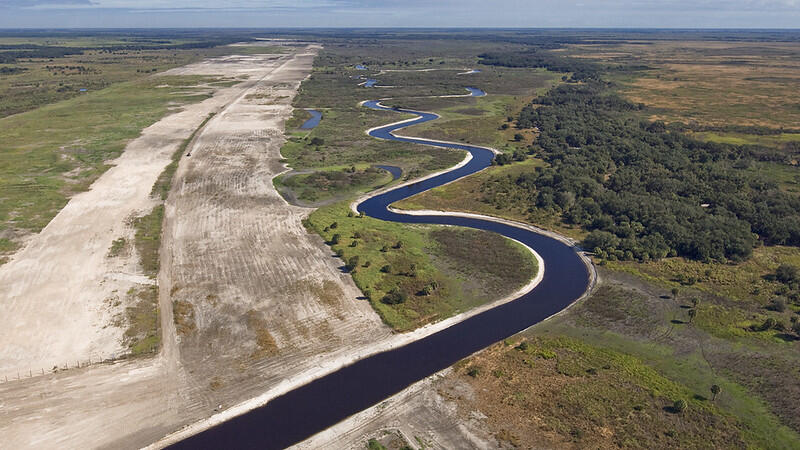Tamiami Roadbed Removal Complete
Old Tamiami Trail is a historic highway built in the early 1900s across the Everglades to connect the growing cities of Tampa and Miami. Unfortunately, the road blocked the critical flow of roughly 220 billion gallons of water through the River of Grass each year. In the summer of 2021, the Tamiami Roadbed Removal project finished six months ahead of schedule.
The roadbed removal project helps restore the ecologically important sheet flow of surface water south through the Everglades.
“Audubon is celebrating the righting of an ecological wrong,” says Julie Wraithmell, Executive Director of Audubon Florida, “The Tamiami Trail has long stood as an impediment to water flowing into Everglades National Park. With the completion of this project, connectivity and water fow are much improved, to support the imperiled habitats and species that need it most.”
Kissimmee River Restoration Project Brings Back Wetlands
After decades of construction, the Kissimmee River Restoration Project has restored 40 miles of river and floodplain and returned almost 25,000 acres to wetlands.

“The conclusion of the Kissimmee River Restoration project is a historic milestone for Everglades restoration,” said Kelly Cox, Director of Everglades Policy for Audubon Florida. “This event highlights an important shift in Everglades restoration projects across the state as we transition from construction to operation. We are thrilled with the ecological benefits we are already seeing from these projects,” she concluded.
The Kissimmee River once stretched 103 miles in length, curving through Central Florida as a haven for wildlife, including at least 39 species of fish and 38 species of water birds. Its two-mile-wide floodplain was regularly inundated by seasonal rainfall, which provided important habitat to fish, wading birds, and other species. However, between 1962 and 1971, the United States Army Corps of Engineers (USACE) channeled the Kissimmee River and created a 30-foot deep, 300-foot wide, 56-mile-long drainage canal (C-38). This project drained approximately 50,000 acres of Kissimmee’s floodplain wetlands, of which about 25,000 are being restored.
Following restoration, Lake Kissimmee is expected to rise one and a half feet, storing water to feed the river during the dry season and rehydrating another 20 square miles of dried marshes. The river’s floodplain will flood seasonally and the river will meander again in order to replicate its natural path.
Audubon has been advocating for the restoration of the Kissimmee River since channelization construction began. We supported the restoration when Congress authorized the project in 1992, and advocated for water reservation until eventual approval in 2020. Through it all, we have been a voice for birds and wildlife that have benefited from the newly restored river, as well as vocal proponents of how the natural channel will benefit food control and water quality for surrounding communities.
The Bottom Line
Wetland habitats of the Kissimmee River channel and floodplain now support at least 159 bird species, 66 of which are considered wetlanddependent during some portion of their life cycles.




